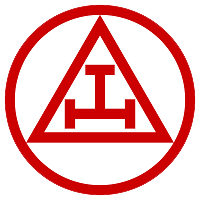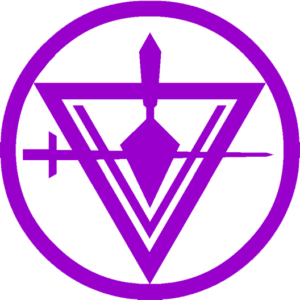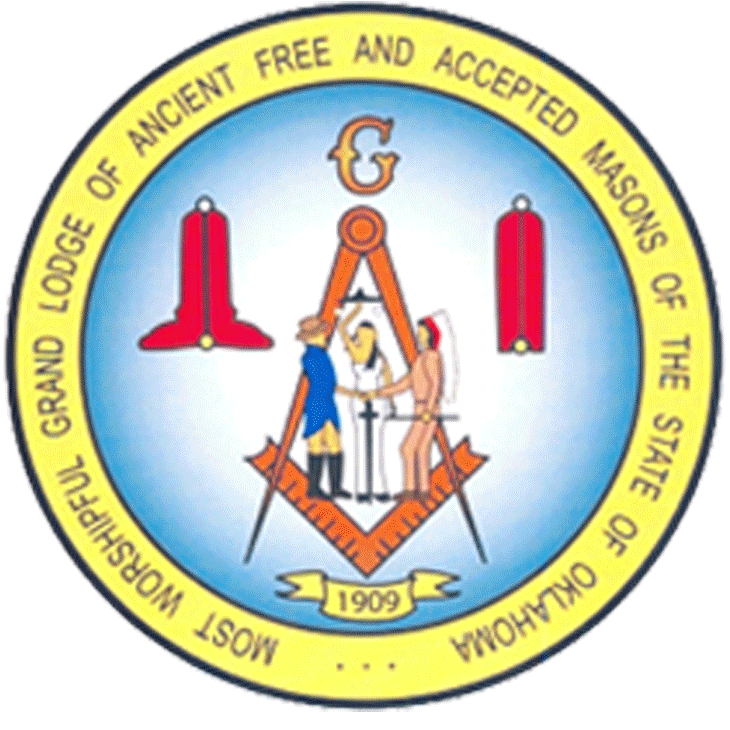
The four degrees of Mark Master, Past Master, Most Excellent Master, and Royal Arch Mason, are conferred under the jurisdiction of Royal Arch Chapters. They are called Capitular because of the prevalence of the idea in the early 19th century that Royal Arch Masonry headed and consummated the craft, or genuine, Masonic degrees.
Mark Master
All Mark degrees in Masonry are based on the symbolism of operative Masons’ marks which were inscribed on stones as a means of identification. These marks were usually lines and angles and represented the professional or craft names of the Masons. All were done at the fellow craft level and so the timing of this degree comes before the Hiramic legend. Until late in 18th century America, the Mark Master degree and the Royal Arch were conferred in chapters attached to lodges and under lodge warrants. The Mark Master degree has therefore always been considered a craft degree. The Lodge of Mark Master is opened for the purpose of advancing a candidate. This is only possible for a Fellowcraft, since a Master Mason cannot be advanced to any degree.
The Mark Master degree continues the story of the building of King Solomon’s Temple. The theme is centered on a stone that is given by a Fellowcraft for inspection by the overseers of the work. This stone with its peculiar mark is subsequently tossed in a pile of building rubble. It turns out the stone was the work of Hiram Abif, completed shortly before his death. The stone symbolically represents the builder himself as a living stone. In preparing his stone, he is preparing himself and becomes incorporated into the structure of self improvement. The stone is a symbol of the Lost Word which is never really lost. It is always present, but we often fail to recognize it because it is outside our consciousness. When we reach that level of awareness where the Word, or stone, is essential to our further progress in building our own Temple, we are able to discover it.
Past Master
The Past Master degree was inspired by the Constitutions of 1723 which set forth the installation ceremony of a new lodge Master. The degree celebrates the coronation of a ruler and his placement in the “Oriental Chair” of King Solomon. It was never a part of the legends of King Solomon’s Temple which surround the other craft degrees, but was originally an honorary degree conferred on the Worshipful Master of a symbolic lodge. Since the Royal Arch was originally restricted to Past Masters of lodges, the ceremony was made into a degree and conferred in chapters attached to lodges.
The Past Master degree entered the system of Freemasonry to facilitate the growing popularity of the Royal Arch during the mid-18th century era. Because the government of the Royal Arch degree was assigned to chapters rather than lodges, the old rule that a candidate had to be an installed master became unworkable. To accommodate the growing popularity of the Royal Arch, a system was devised which would allow a man to “pass the chair” of Worshipful Master without having actually served in that capacity. He was made a Virtual Past Master. This ceremony eventually found its form in what we know today as the Past Master degree.
Most Excellent Master
The Most Excellent Master degree is the sixth in the system of degrees of the York Rite and is as intimately connected with the Master Mason degree as the Mark Master degree is with that of the Fellowcraft. The ceremonies commemorated in this degree refer to the completion and dedication of King Solomon’s Temple.
The degree fills an important gap which long existed in our Masonic ritual system. As we know, the Temple was left unfinished in the Master’s degree, and the Royal Arch noted its destruction. The completion and consecration of the first Temple, its use as the glory of the Jewish nation for the 400 years which elapsed between the legend of Hiram and the destruction of the Temple, had been passed over by the rituals of all the other Rites extant during the 18th century. Thus, the Most Excellent Master degree was authored and became essential to the overall legend of the Masonic degrees, and in developing the complete allegory of Freemasonry. The obligation of this degree is one of the most profound in all of Masonry. It recognizes for the first time that the real mission of Masonry, and each individual Mason, is to enlighten mankind and make the acquisition and teaching of knowledge a duty, rather than an ideal.
Royal Arch
To understand the history and inspiration of the Royal Arch degree in Masonry, we must remind ourselves that the Constitutions of 1723 fixed the craft degrees at only two. The Master Mason degree did not appear until 1725 and was considered to be a side degree for some 15 years without the slightest recognition from a Grand Lodge. No Masonic standing was dependent on that degree until the Constitutions of 1738. The entire Masonic world, then, witnessed the development of a new and important degree and its adoption without any formal sanction. There never was any precise manner insisted upon of conferring degrees until the Union of the two English Grand Lodges in 1813.
The Royal Arch degree is a formal product of that union but seems to have arisen in England and France simultaneously after 1740. It was inspired by the growing familiarity of the Master Mason degree among 18th century Masons and the problem of it being patently incomplete. The great virtue of Hope was deferred and the one who sought the ultimate secret of Freemasonry was given a substitute. How could there have been a better demonstration of the propriety of a fourth degree to do for the third what the third had promised to do for the second? It is no wonder then that the Royal Arch degree was created. When the Grand Lodge of the Ancients established its Constitution in 1751, it made the Royal Arch an essential degree to the craft system of degrees, thus launching what would become the “ne plus ultra” of Capitular Masonry worldwide. In the Union of 1813, the degree was established as a Landmark of Masonry, attaching it to the Master Mason degree for all time.
The degree is based on the discovery of a secret vault built by King Solomon under the Sanctum Sanctorum of the first Temple at Jerusalem. There is a resurrection of that which had been buried—a discovery of that which had been lost—and exchange of that which, like the body, is temporary; for that which, like the soul, is permanent. The True Word is revealed. The building of the sacred Temple out of the ruins of the first represents the rebirth of the human race in a new dispensation to be later revealed—and our own rebirth into a higher consciousness with God.



